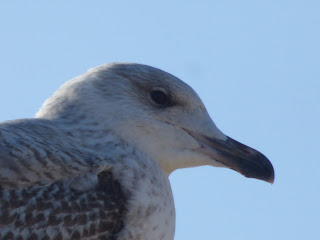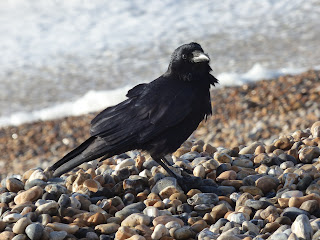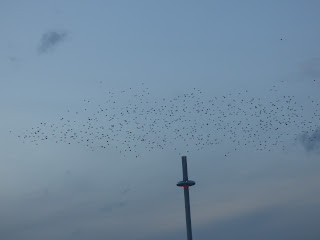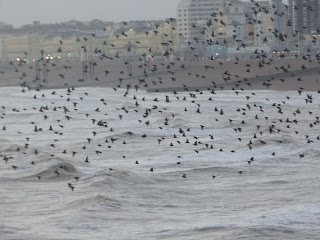From the 21st of February to the 4th of March I had my second lot of mock exams of year 13. Revision and cracking down on the hard work has kicked in now for my A Levels in May and June, so I've had to take a slight step back from birding so regularly, and this is also the reason for the long gap between blog posts. Either side of my mock exams I still managed to enjoy some quality birding moments.
On the 16th and 17th of February I went down to Brighton to see the Starling murmuration at Brighton Palace Pier. I had been exactly 2 years ago on the same dates and had wanted to visit again. The raging stormy weather on the first night unsurprisingly meant that the Starlings did not put on a show, quickly taking shelter beneath the structure of the pier. I didn't leave the shelter on the hotel and viewed the pier from the window. As a result, instead of heading home on the Thursday morning, I decided to stay in the area and wait until dusk for another try with the Starlings. A pleasant walk along the coast to Shoreham provided a lifer in the form of the long-staying Long-tailed Duck that had been at Southwick Ship Canal since November. I had actually somehow missed all the reports of this bird on Birdguides, so it was an awesome surprise to see it.
Ebird trip report here.
Some pics from my time at Brighton:
 |
| Partially leucistic male Blackbird |
 |
| Stormy conditions |
 |
| Great Black-backed Gulls and Herring Gulls (plus a Cormorant on far right) |
 |
| 1st winter Herring Gull |
 |
| The same 1st winter Herring Gull as the individual above |
 |
| 1st winter Herring Gull |
 |
| 1st winter Herring Gull |
 |
| (2nd winter?) Herring Gull |
Pied Wagtail above and below
Turnstones above and below
 |
| Turnstone showing off its retrices |

Carrion Crows above and below
 |
| Showing off its nictitating membrane |
 |
| I quite liked the lighting on this one |
 |
| Iridesence showing nicely on this Starling |
Female Long-tailed Duck above and below - I'm still confused by the age of this bird. Reviewing online pictures of this individual, perhaps a 1st winter bird that's mantle has become less contrasting as it has matured through the winter and started to look more adult-like? For anyone with more knowledge about Long-tailed Duck moult patterns and how to age them any opinions would greatly be appreciated.
 |
| Peregrine |
 |
| Cormorant (sinensis subspecies) |
Orange ringed 'F0TT' Herring Gull below:
 |
| 3rd winter Herring Gull |
 |
| Adult Common Gull |
 |
| 1st winter Herring Gull |
 |
| (3rd winter?) Herring Gull |
Starling murmuration below:







































